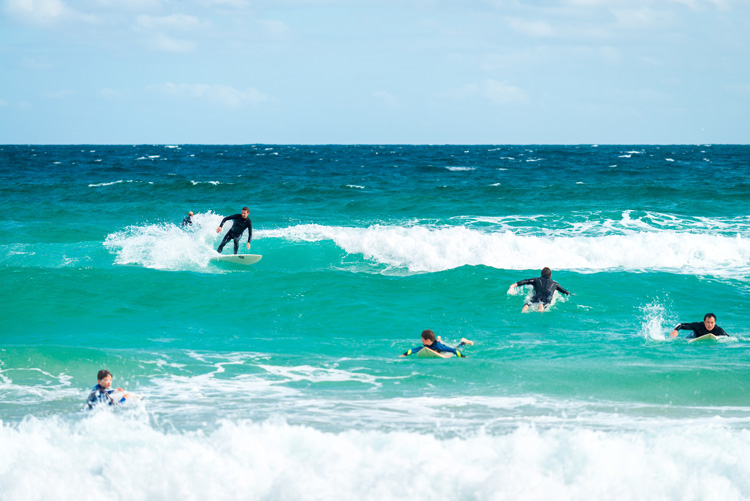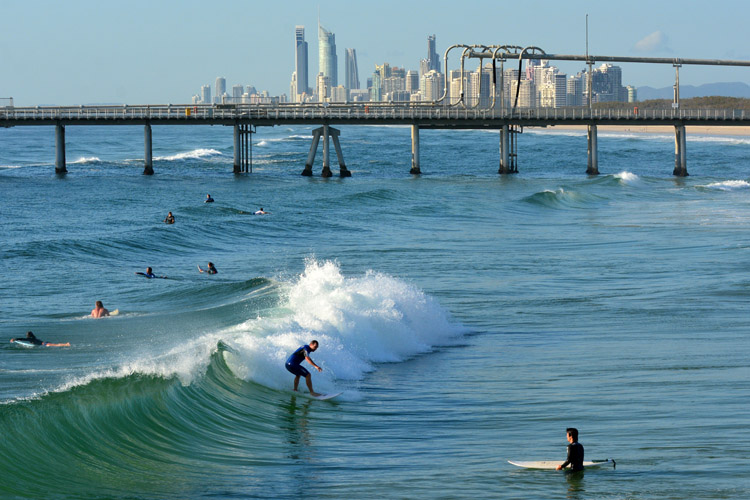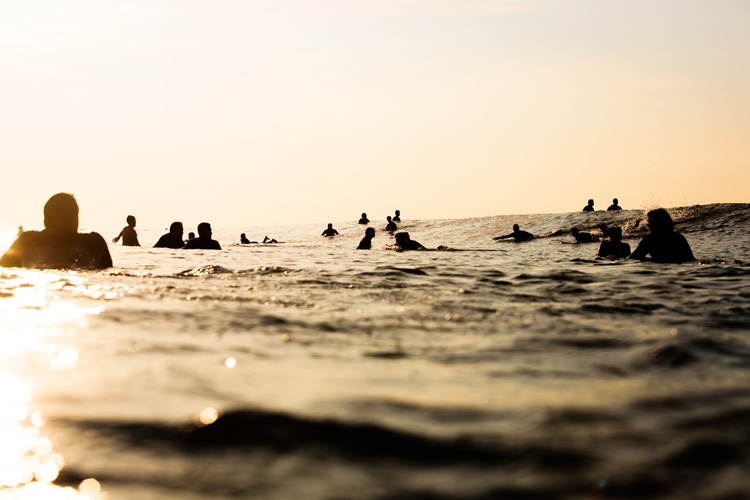Surf localism is an aggressive behavior commonly seen in the most crowded surf spots on the planet.
When the ancient Hawaiians introduced surfing to the world, it was kind of like the birth of money - it made some people hungry, greedy, and powerful while leaving the majority thirsty, needy, and destitute.
Before California made surfing mainstream in the 1960s, surfing itself was a quiet and hyper-local sport.
After all, it's one of the few sports that is mainly dictated by one's geographical location.
Over time, however, with cheap travel, lighter surfboards, the first competitions, the rise of surf culture, ultra-crowded peaks, and digitized media, word about the next surfing paradise slowly came into the consciousness of starved surfing masses.
This gave birth to localism.
Back in time, when the first settlers started surfing in their own secluded spot, there wasn't much competition for the waves because they weren't a scarce resource.
Localism happened because locals have always called their home break their own.
"If you don't belong to our local tribe, stay away from our waves," "You don't belong here," or "Haoles, go home" are some of the words you'll hear from surfing extremists.

Do Not Trespass
The logic behind surf localism is easy to understand.
How would you feel if I started defecating in your backyard? Not too good, I'm guessing. That's exactly what's happening now.
You see, surfing isn't that much fun when there are heaps of strangers on the lineup dropping in left and right for the perfect set.
It just isn't fun.
Not to mention, when waves get sizeable and heavy, it can get really dangerous.
These boards can fly at you, hit you in the face, slice your back with the fins, or wipe out real hard onto the razor-sharp reef.
On the other hand, no one owns the ocean and the waves, so everyone should have the right to surf wherever they want, right?
In theory, yes. But life doesn't come with a user's manual.
In many cases, surf localism results in physical violence. It is a direct consequence of extreme territorialism and control of the breaking waves.
There's more: vandalized cars and equipment, verbal assault, intimidating signs, and surf gangs are also recurrent issues in some of the world's most popular surf breaks.

Fighting Surf Localism with Surf Etiquette
When traveling to a different surf spot, always respect the locals.
It's their turf and theirs to call home. You're a visitor, so don't get into trouble in their neck of the woods.
The person nearest the peak gets to call the shots. If you don't have priority, just don't force it unless you want a fist forced down your face.
If a wave is too gnarly or technical for you, don't paddle out - surf where your skill level is appropriate.
If you can't handle the heat of the crowd, you'll get burned. Just get out.
Make sure you get out of the way when the moment arrives.
When paddling back to the lineup, don't cut into people's lines. They're on a wave, so they get priority.
Above all, never drop in. Always look on either side and make sure you're not dropping in on anyone. This can be dangerous and a serious bummer.
Earn Your Stripes or Move Away
The culture of surfing has always been competitive by nature. Kooks will be kooks and will never learn.
There will always be hard knocks - guys who will do whatever it takes to get every wave possible.
But just don't be that guy unless you want to get your teeth knocked out.
Never before has surfing demanded a more disciplined athlete. So, if you're in California, Hawaii, or Australia, it's always going to be competitive.
You either compete, or you get out. It's that simple.
Can't compete? Sorry, but you're going to have to earn your stripes on this one. Either that or you move 100 miles down the road.
Sometimes though, that can bring the best possible outcome - the perfect wave, with no one around but you and your mates.
Take a look at the rules for surfing waves in non-local surf spots.
